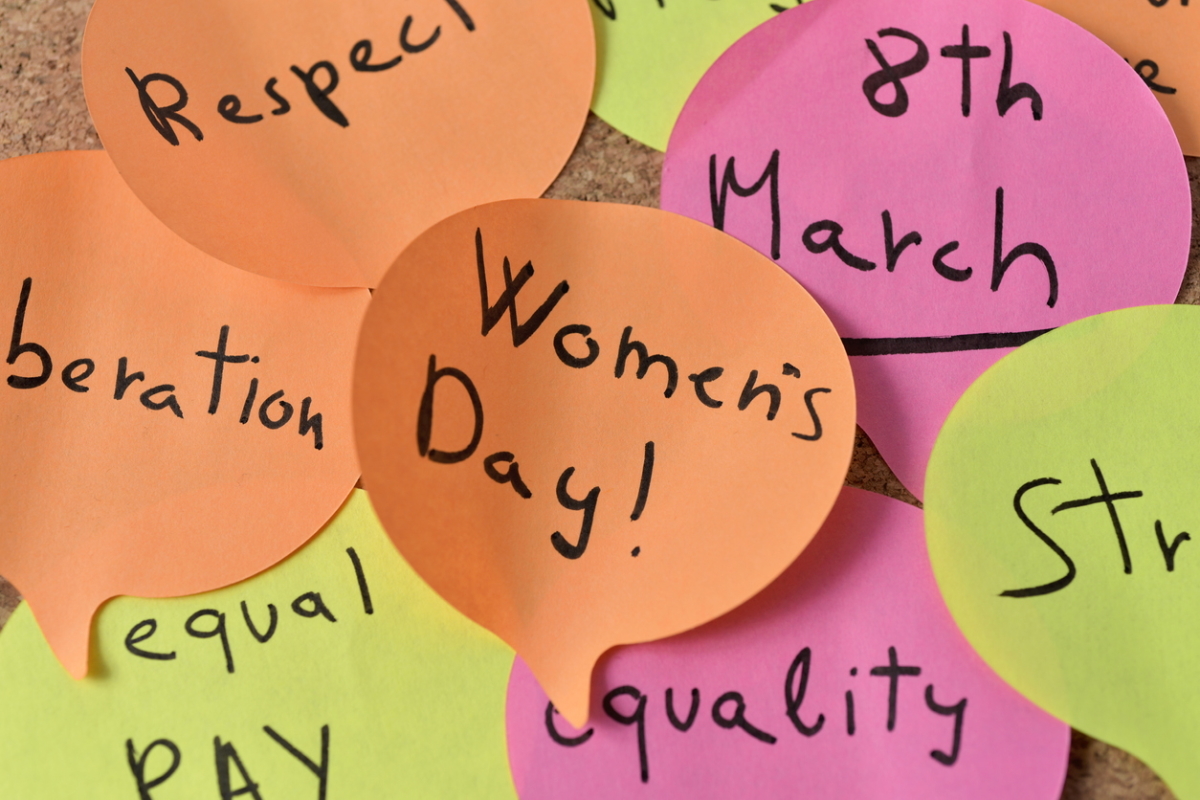#BreakTheBias this International Women’s Day

This International Women’s Day, Business Reporter spoke to nine industry experts to learn more about how we can successfully #BreakTheBias.
As International Women’s Day rolls around again, it is the perfect opportunity to reflect on how far we’ve come whilst striving to continue pushing for gender equality. This year’s theme ‘#BreakTheBias’ reminds us that we don’t live in an equal world and aims to start a conversation about overcoming biases.
These are particularly prominent in male-dominated workplaces, which are common in the technology industry. Indeed, new research has shown that nearly three-quarters of women working in tech believe a gender bias still exists. How can we Break The Bias?
The issue at hand
Before we can strive to #BreakTheBias, it is important that we understand how such biases flourish and fester in technology workplaces.
“Gender bias is too prominent within the technology industry,” begins Samantha Thorne, Head of People at Node4. “In fact, 38% of women said they witness gender bias - defined as men being considered more capable - in their tech-based workplace. With an ongoing skills shortage troubling the sector, we should be encouraging women into the industry, not pushing them out.”
“I don’t think the barriers in technology are any different to those in other environments where the majority of workers and, above all, managers are men,” argues Eulalia Flo, Sales Director, Iberia at Commvault. “The more masculine leadership styles are competitive and less team-oriented, so at first women can be seen as ‘soft’, when it’s a question of communication style.
“As in any other aspect in life, you have to know how to adapt to your environment, while remaining yourself. The more aware you are of gender biases, the easier it will be to deal with them, and even to show them to others.”
Samantha Humphries, Head of Security Strategy EMEA at Exabeam, explains that increasing diversity is beneficial for businesses, not a burden: “Gender parity not only benefits women wanting to go into science and technology, but it also has so much to offer the companies that are willing to strive for it. Einstein once said, ‘we cannot solve our problems with the same thinking we used when we created them’.
“Diversity of thought comes from the diversity of people. So for example, if you were to hire all your employees from one university, one class background, one gender and one race, chances are you’re going to end up with a business severely lacking in diversity of thought – and this will stunt your success.
“Gender is only one stream of diversity for sure, but ensuring women are paid and rewarded equally for the work that they do is frankly the bare minimum towards hiring and retaining them and this will ultimately end up benefiting all parties.”
Being conscious of the unconscious bias
Conscious bias has been recognised as damaging for some time now, but only recently have we begun to recognise that unconscious bias can be equally, if not more, harmful. Arguably the most common form of discrimination, unconscious bias is an implicit prejudice that nobody is immune to. It’s as if people are programmed to consider those of other ethnicities, genders, religions, etc. in a different way.
“This International Women’s Day theme #BreakTheBias, starts with awareness,” states Nicola Kinsella, VP of global marketing at Fluent Commerce. “Choosing to see the good in others, instead of assuming based on unconscious bias, will be the only way we can begin to break our own predisposition.”
“Organisations have a part to play and should create spaces where women can thrive,” adds Kathryn Barnes, Employment Counsel EMEA at Globalization Partners. “Educating employees on unconscious bias, implementing flexible working environments and curating policies that support working mothers, are all instrumental in attracting and retaining female talent. Mentoring can also be a great way to level the playing field and support women as they climb the career ladder.”
Breaking the bias
There are a number of ways that businesses can strive to break the bias and achieve gender equality within their organisation.
“While the number of women entering traditionally male-dominated industries such as finance and technology has increased, there’s still a lot of work to do to level the playing field,” explains Kathy Gormley, Principle Solutions Engineer at Resistant AI. “There’s something powerful about seeing women succeed in these roles because it can give other women a sense of visibility and a push of confidence. It validates and reinforces the idea that they, too, can go down this path and #breakthebias.”
Caroline Seymour, VP of Product Marketing at Zerto, a Hewlett Packard Enterprise company, agrees that: “Awareness and sensitivity to the gender gap issue is stronger than ever, but there is still so much more to be done. For example, some initiatives that are realistic and can be easily implemented today include, creating gender-neutral job descriptions, ensuring women are part of the interviewing team, ensuring that interview rounds include diverse candidates, conducting regular pay equity reviews to attract and retain candidates, offering mentorship and advancement programs, and regularly evaluating hiring and promotion processes to eliminate bias.”
“Pricing, accessibility, and safety are some of the many barriers keeping women from being as mobile as their male counterparts,” explains Krishna Desai, Senior Global Marketing Manager at Cubic Transportation Systems. “The only way to affect change in the industry is to put women in the driving seat and give them the power to make a direct impact. Giving women a seat at the table will help transit agencies better meet the needs of female travellers and ensure they can get to where they need to go safely and efficiently.”
“An equal world is an enabled world,” concludes Dominique Fougerat - EVP People & Culture at Axway. “We can actively choose to challenge stereotypes, fight bias, broaden perceptions, improve situations, and celebrate women’s achievements. We support local education programs to contribute to start inclusion earlier in life than just at work.
“We are on an irresistible path to a different kind of society and tech must reflect this challenge to all businesses: We challenge all businesses to join the discussion and, if we pull together as an industry, we can improve as a sector and support the technology women of today and inspire those of tomorrow.”
Main image courtesy of iStockPhoto.com

Business Reporter Team
You may also like
Most Viewed
Winston House, 3rd Floor, Units 306-309, 2-4 Dollis Park, London, N3 1HF
23-29 Hendon Lane, London, N3 1RT
020 8349 4363
© 2025, Lyonsdown Limited. Business Reporter® is a registered trademark of Lyonsdown Ltd. VAT registration number: 830519543





